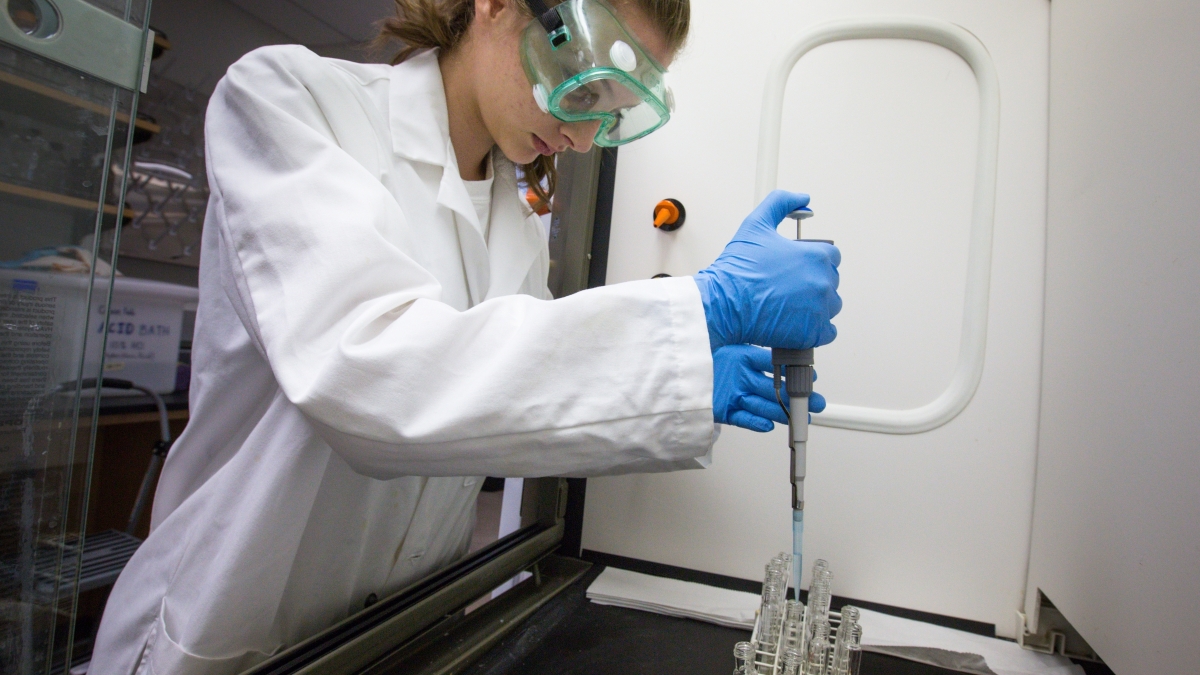ASU study shows lab courses benefit faculty, as well as students
Labs offering real research create hands-on experience for students and produce actual data professors can use

The benefits of letting students conduct real research in the classroom have been examined multiple times during the past decade, but a new study involving researchers at Arizona State University is the first to show what faculty have to gain from the new teaching method.
The study, published in BioScience, is built around the idea that faculty members have three options when designing a lab course — “cookbook” labs, inquiry-based labs and course-based undergraduate research experiences (CUREs).
Sara Brownell, an assistant professor in the School of Life Sciences, said that while the pre-designed, right-or-wrong nature of cookbook labs has long been proven to be an inadequate teaching method, researchers are still exploring whether inquiry-based labs or CUREs should replace them. Brownell describes the difference between them as one of function. Whereas both task students with exploring a specific question using personally designed experimentation, only CUREs create data that faculty members can actually use for their own research.
“An example I like to give for inquiry-based courses is, if you tried to figure out what bacteria is on your shoe right now, you swab it, grow it and try to identify it — and it’s new to you,” Brownell said. “That could be really cool to you as a student, but no one outside the classroom really cares about that.”
CUREs, alternatively, are designed by the faculty member teaching the lab to focus on their personal research projects. According to Brownell, this method offers students a chance to learn about the scientific process through hands-on experiences, but also provides faculty with data they can use.
“Between teaching, research and service, there are just not enough hours in the day for most faculty,” Brownell said. “So, they have to make decisions about where to put more or less time — and you’re always kind of letting someone down.”
By giving professors dozens of extra hands to help gather or analyze valuable data, Brownell said they aren’t forced to choose between focusing on teaching or research.
Other benefits of CUREs include increased grant funding and improved relationships between teachers and students — who behave more like the peers they would be in a real-world setting. CUREs also contribute positively to promotions and tenure-track positions by demonstrating innovative teaching skills.
In addition to this, Brownell said faculty admit to enjoying CUREs better from a teaching method because it keeps them intellectually involved. Though it isn’t measurable, Brownell said that study participants claimed their jobs felt better when teaching CUREs.
However, Brownell said there are a few challenges to a CURE lab.
First and foremost, logistics can be complex. If the lab requires students to leave campus, faculty must have a way to get them to the field site. Also, since students work at different paces and may conduct different experiments, faculty members must adjust to varied needs in terms of guidance.
Time and cost are also factors, according to Brownell, as CURE labs require more effort and money to create. Sometimes the financial needs necessitate outside grant funding or institutional buy-in, neither of which are guaranteed.
Brownell does plan to address these obstacles in the next step of her research by collecting data on CURE courses already taught at institutions around the country. Then, after her team analyzes what makes them successful, professors interested in creating their own CURE labs will have guidelines to follow.
Top photo: Freshman Natalia Thompson works in ASU assistant professor Arianne Cease’s locust lab, which focuses on understanding how human-plant-insect interactions affect the sustainability of agricultural systems around the world. Photo by Charlie Leight/ASU Now
More Science and technology

ASU receives 3 awards for research critical to national security
Three researchers in the Ira A. Fulton Schools of Engineering at Arizona State University have received grant awards under the Defense Established Program to Stimulate Competitive Research, or…

Celebrating 34 years of space discovery with NASA
This year, NASA's Hubble Space Telescope (HST) is celebrating its 34th anniversary of the world's first space-based optical telescope, which paved the scientific pathway for NASA's James Webb Space…

Making magic happen: Engineering and designing theme parks
The themed entertainment industry is widespread and diverse, encompassing everything from theme parks to aquariums, zoos, water parks, museums and more. The Theme Park Engineering and Design…